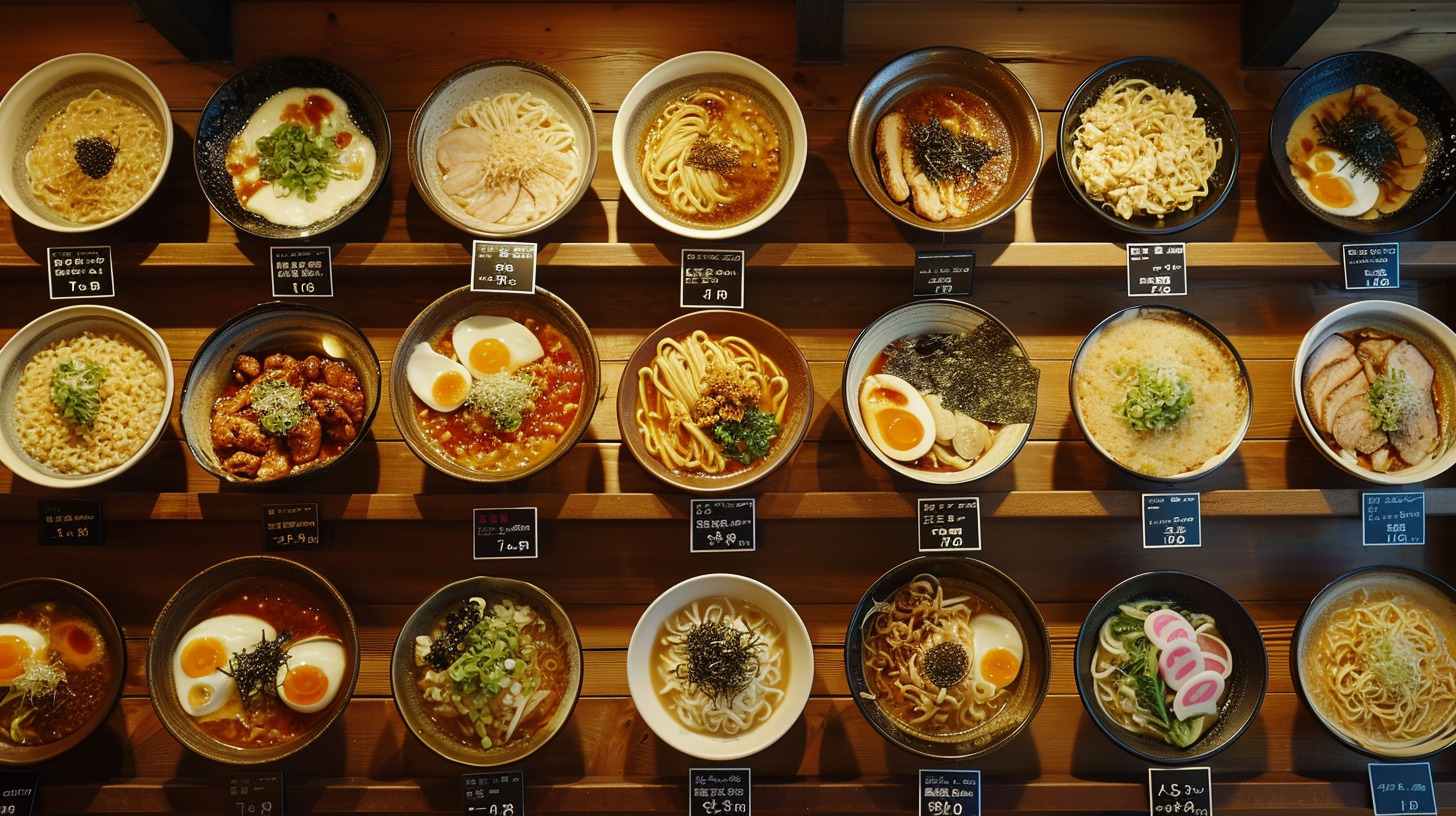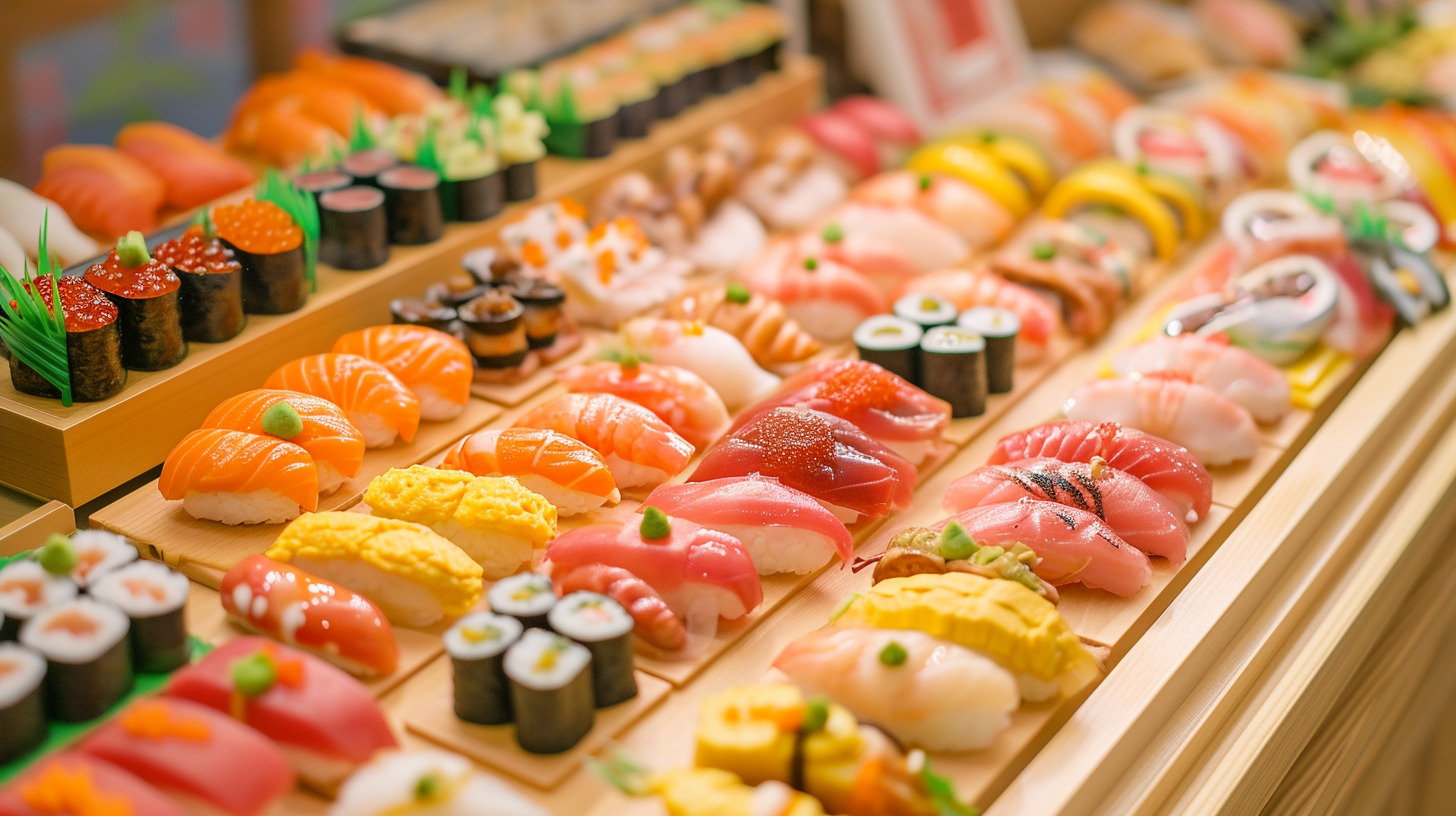Shokuhin Sampuru, or food samples, is a unique aspect of Japanese culture that beautifully blends culinary art with craftsmanship. Originating in Japan during the early 20th century, these lifelike food replicas have become an integral part of the country’s culinary landscape.
The inception of Shokuhin Sampuru is as fascinating as the craft itself. It began as a practical solution for restaurant owners to display their menu offerings to customers, particularly in an era when literacy was not widespread. These replicas provided a visual menu, making it easier for customers to understand and choose their meals.
Over the years, Shokuhin Sampuru evolved from mere commercial tools to an art form celebrated for its precision and creativity. The craft requires meticulous attention to detail, as artisans aim to replicate the texture, color, and even the glossiness of real food. The result is stunningly realistic models that are often mistaken for actual dishes.
Today, Shokuhin Sampuru not only serves its traditional purpose in restaurant display windows but also represents a unique intersection of art, commerce, and culture. These replicas are more than just imitations of food; they are a testament to the dedication and skill of the artisans who create them, and a symbol of the pride and precision ingrained in Japanese craftsmanship.


The Artistry Behind Shokuhin Sampuru
The creation of Shokuhin Sampuru is an intricate process that blends artistry with culinary understanding. Each replica is a testament to the craftsman’s skill, capturing the essence of real food with stunning accuracy.
- Materials and Techniques: Traditionally, Shokuhin Sampuru were made from wax, but modern techniques primarily use a more durable and detailed material, PVC (polyvinyl chloride). The process begins with molding the base shape, followed by painstaking detailing to mimic textures and colors of real food.
- Colour and Texture: Achieving the right color and texture is crucial. Artisans use a variety of tools and techniques to paint and add details, ensuring each piece looks as appetising and authentic as possible. The challenge lies in replicating the natural irregularities and variances found in actual food.
- Lifelike Presentation: The final step is arranging the replica in a way that mirrors how the dish would be served. This includes considering aspects like the placement of ingredients, garnishes, and even simulating steam or condensation.
The Artisans Behind the Craft
The artisans who create Shokuhin Sampuru are skilled professionals, often with years of training. Many inherit the craft from previous generations, keeping the tradition alive.
- Training and Skill Development: Artisans typically undergo rigorous training, learning the nuances of food textures, colours, and presentation. This skill is not just about replication but understanding the essence of culinary art.
- Attention to Detail: What sets these artisans apart is their extraordinary attention to detail. Each grain of rice, the sear on a piece of meat, and the gloss on a vegetable are meticulously crafted to achieve a hyper-realistic look.
The Role of Shokuhin Sampuru in Culinary Education
Interestingly, Shokuhin Sampuru also plays a role in culinary education. Chefs and students often use these replicas as references for plating and presentation, learning how to make real dishes look as appealing as their fake counterparts.
Balancing Tradition with Innovation
While rooted in tradition, the craft of Shokuhin Sampuru is not immune to innovation. Artisans continuously experiment with new materials and techniques to improve durability, detail, and realism.
Shokuhin Sampuru in the Japanese culinary scene
More Than Just Window Dressing
Shokuhin Sampuru, while initially created for practical purposes, has become an integral part of the dining experience in Japan. These food replicas serve as both an art form and a communication tool in the culinary world.
- Visual Menus for Customers: For diners, especially tourists and non-Japanese speakers, Shokuhin Sampuru provides a clear and appetizing preview of what they can expect from their meal. This visual representation helps overcome language barriers and aids in decision-making.
- Enhancing the Dining Experience: The presence of these replicas in restaurant display windows adds to the aesthetic appeal and draws in customers. It’s a unique aspect of dining out in Japan, adding a touch of anticipation and excitement.
The Importance of Accuracy and Realism
In the competitive Japanese culinary market, the accuracy and realism of Shokuhin Sampuru are crucial. They are not just representations but also reflections of the quality and type of cuisine offered by a restaurant.
- Reflecting the Chef’s Skill: These replicas are a matter of pride for chefs, as they showcase the skill and creativity that goes into their cooking. The more realistic the replica, the higher the expectation of the culinary experience.
- Seasonal and Menu Changes: Shokuhin Sampuru are often updated to reflect seasonal changes and new menu items, keeping the displays fresh and enticing for repeat customers.
A Marketing Tool with Cultural Significance
Shokuhin Sampuru is more than just a marketing tool; it’s a cultural icon that represents Japan’s attention to detail and its unique approach to culinary presentation.
- Cultural Ambassador: For many visitors, Shokuhin Sampuru is one of their first introductions to Japanese culture and its emphasis on aesthetics, precision, and respect for food.
- Educational Aspect: These replicas also serve an educational purpose, teaching people about Japanese cuisine, ingredients, and traditional dishes.

Global Influence and Adaptations of Shokuhin Sampuru
Crossing Borders: Shokuhin Sampuru’s International Reach
The art of Shokuhin Sampuru has crossed Japanese borders, captivating audiences worldwide. Its influence extends to various countries and cultures, reflecting the global fascination with Japanese cuisine and aesthetics.
- Showcases in International Restaurants: Beyond Japan, restaurants around the world, particularly those specializing in Japanese cuisine, have started to adopt Shokuhin Sampuru to showcase their dishes. This trend highlights the growing appreciation for the art form and its practical benefits in the culinary industry.
- Cultural Exchanges and Exhibitions: Shokuhin Sampuru has been featured in cultural exhibitions and culinary shows globally, serving as an ambassador of Japanese craftsmanship and culinary culture.
Adaptations in Different Cultures
As Shokuhin Sampuru gains international recognition, various cultures have adapted it to their culinary contexts, blending local food traditions with this unique Japanese art.
- Local Cuisine Replicas: In some regions, artisans have begun creating replicas of local dishes using the techniques of Shokuhin Sampuru, showcasing the versatility and adaptability of this craft.
- Educational and Promotional Uses: Beyond restaurants, these food replicas find roles in culinary education, food photography, and marketing, demonstrating the diverse applications of Shokuhin Sampuru in the food and hospitality industry.
Challenges and Opportunities in Globalisation
As Shokuhin Sampuru steps onto the global stage, it faces challenges and opportunities. Balancing traditional techniques with modern demands and maintaining the craft’s authenticity are key.
- Maintaining Authenticity: As the craft expands globally, ensuring the preservation of its traditional techniques and standards is a challenge for artisans.
- Innovative Potential: There’s potential for innovation in materials and methods, driven by environmental concerns and technological advancements, opening new avenues for this art form.

Modern Innovations, Challenges, and Experiences in Shokuhin Sampuru
Technological Advancements and Challenges
The craft of Shokuhin Sampuru is embracing technological innovation. Digital tools and 3D printing are becoming integral to the crafting process, enhancing precision and efficiency. However, these advancements bring challenges, particularly in preserving the traditional artisanal skills at the heart of Shokuhin Sampuru.
The current landscape also presents a challenge in the digital era, where photographic menus are prevalent. Ensuring that Shokuhin Sampuru remains relevant and appealing requires balancing modernity with the maintenance of the craft’s authenticity.
Experiencing Shokuhin Sampuru Firsthand
Shokuhin Sampuru offers unique experiences beyond restaurant displays, accessible to both tourists and locals:
- Workshops: Across Japan, particularly in cities like Tokyo and Osaka, workshops provide hands-on experiences for making Shokuhin Sampuru. These sessions offer insight into the skill and patience this art form demands.
- Showrooms and Museums: Specialised showrooms and museums showcase the intricate details of Shokuhin Sampuru. They exhibit an array of replicas, demonstrating the craft’s evolution and versatility.
These experiences underscore the artistic and cultural importance of Shokuhin Sampuru in Japan’s culinary landscape.
The Continuing Allure of Shokuhin Sampuru
Reflecting on Shokuhin Sampuru’s journey, its cultural significance in Japan and its global impact are clear. This craft transcends mere imitation, embodying Japan’s commitment to precision, artistry, and culinary tradition. Its evolution, while preserving artistic integrity, speaks to its enduring appeal.
Looking ahead, Shokuhin Sampuru’s future is promising as it navigates tradition and innovation. As it adapts to changing times, this unique Japanese craft continues to fascinate people globally, significantly contributing to Japan’s culinary identity and global perception.













